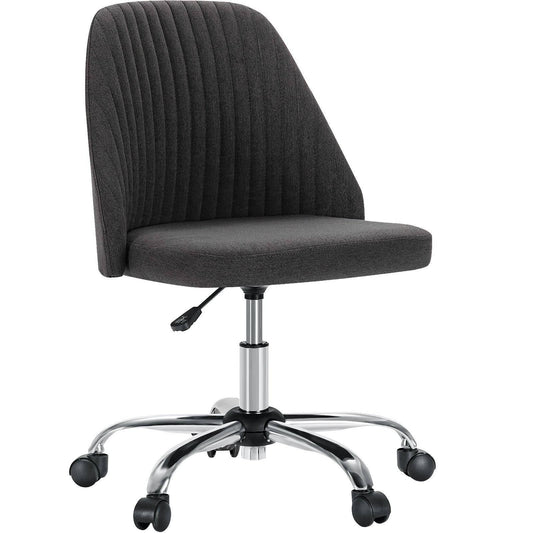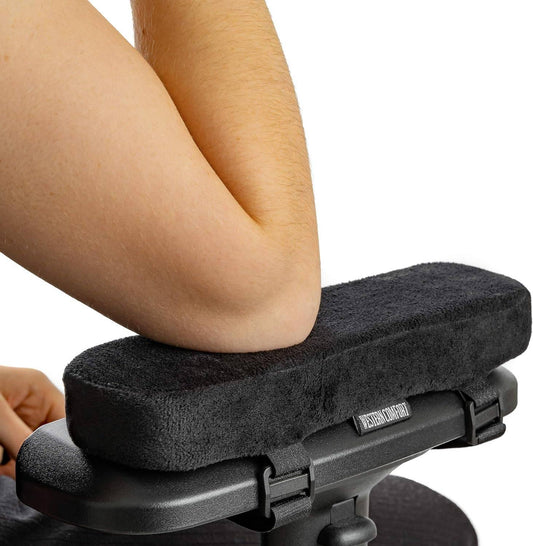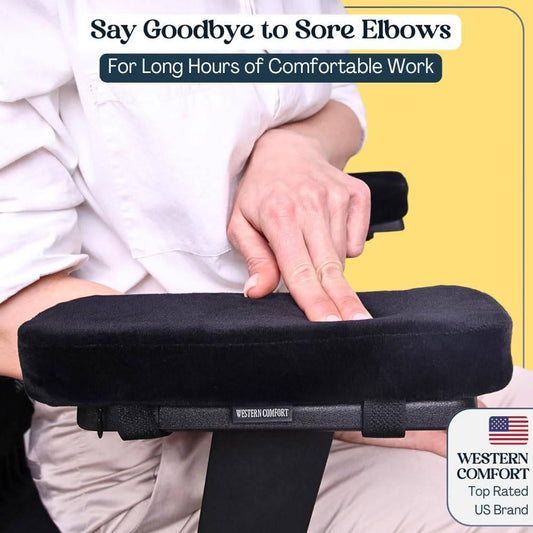La importancia de las sillas de oficina ergonómicas: mejorar la comodidad y la productividad

¿Sabías que un oficinista promedio pasa alrededor de 8 horas al día sentado en su escritorio? Es una cantidad de tiempo considerable que puede tener un profundo impacto en su salud y bienestar. Una forma de mejorar la comodidad y reducir el riesgo de desarrollar trastornos musculoesqueléticos es invertir en sillas de oficina ergonómicas. En este artículo, analizaremos la importancia de las sillas de oficina ergonómicas y cómo pueden mejorar tanto la comodidad como la productividad.
Comprensión de las sillas de oficina ergonómicas
Las sillas de oficina ergonómicas están diseñadas específicamente para brindar soporte y promover una buena postura al sentarse. Son ajustables y ofrecen diversas características que permiten a los usuarios personalizar su postura. Desde la altura y la profundidad del asiento hasta el tamaño y la inclinación del respaldo, las sillas ergonómicas ofrecen una gran flexibilidad para adaptarse a personas de diferentes formas y tamaños.
Una característica importante de las sillas de oficina ergonómicas es el soporte lumbar. La zona lumbar de la espalda es especialmente vulnerable a la tensión y la incomodidad al estar sentado durante períodos prolongados. Las sillas ergonómicas tienen un respaldo contorneado que se adapta a la curva natural de la columna vertebral, reduciendo la presión en la zona lumbar y promoviendo una postura al sentarse más saludable.
Los beneficios de las sillas de oficina ergonómicas
Invertir en sillas de oficina ergonómicas ofrece numerosos beneficios tanto para empleados como para empleadores. Estas son algunas de las principales ventajas:
1. Mayor comodidad
Las sillas ergonómicas están diseñadas para brindar una comodidad óptima durante largos periodos de tiempo sentado. Sus características ajustables permiten a los usuarios encontrar la posición más cómoda, reduciendo la incomodidad y la fatiga. El uso de materiales de alta calidad, como la malla transpirable, garantiza una ventilación adecuada y previene la sudoración.
2. Postura mejorada
Encorvarse o adoptar una mala postura puede provocar diversos problemas de salud, como dolor de espalda y cuello. Las sillas ergonómicas favorecen una correcta alineación de la columna vertebral, reduciendo la tensión en músculos y ligamentos. Al mantener una buena postura, los empleados pueden evitar el dolor crónico y mejorar su bienestar general.
3. Mayor productividad
Los empleados que se sienten cómodos tienen más probabilidades de mantenerse concentrados y comprometidos con su trabajo. Las sillas de oficina ergonómicas contribuyen a una mayor productividad al reducir las molestias y las distracciones causadas por el dolor o la incomodidad. Cuando los empleados se sienten bien físicamente, pueden dedicar más energía y atención a sus tareas, lo que se traduce en un mejor rendimiento.
4. Prevención de trastornos musculoesqueléticos
Permanecer sentado durante períodos prolongados en posiciones incorrectas puede contribuir al desarrollo de trastornos musculoesqueléticos, como el síndrome del túnel carpiano, la tendinitis y el dolor lumbar. Al proporcionar un soporte adecuado y promover una buena postura, las sillas ergonómicas pueden reducir significativamente el riesgo de estas afecciones, mejorando así la salud de los empleados a largo plazo.
5. Mejor circulación sanguínea
Las sillas de oficina tradicionales suelen restringir la circulación sanguínea en las piernas, lo que provoca molestias, entumecimiento e incluso afecciones más graves como la trombosis venosa profunda. Las sillas ergonómicas con altura y profundidad de asiento ajustables promueven una mejor circulación, reduciendo el riesgo de estos problemas y manteniendo la salud general de las piernas.
6. Personalización
Cada persona tiene proporciones corporales y necesidades únicas para sentarse cómodamente. Las sillas de oficina ergonómicas ofrecen una amplia gama de ajustes para adaptarse a diferentes personas. Desde la altura del asiento y la posición de los reposabrazos hasta las opciones de soporte lumbar, estas sillas se pueden personalizar para adaptarse perfectamente al usuario.
7. Ahorro de costes a largo plazo
Invertir en sillas ergonómicas puede parecer un gasto adicional al principio. Sin embargo, al compararlo con los posibles costos asociados al ausentismo laboral y los tratamientos médicos debido a malas posturas e incomodidad, la inversión resulta rentable a largo plazo. Además, las sillas ergonómicas suelen ser resistentes y duraderas, lo que reduce la necesidad de reemplazos frecuentes.
Cómo elegir la silla ergonómica adecuada
Al seleccionar una silla de oficina ergonómica, se deben tener en cuenta ciertos factores para garantizar el mejor ajuste y soporte:
1. Funciones ajustables
Busque sillas con altura de asiento, ángulo de respaldo y reposabrazos ajustables. Estas características permiten personalizar la posición del asiento para encontrar la más cómoda según las proporciones de su cuerpo.
2. Soporte lumbar
Una buena silla ergonómica debe tener soporte lumbar ajustable para mantener la curvatura natural de la columna. Esto garantiza una alineación adecuada y reduce la tensión en la zona lumbar.
3. Profundidad y anchura del asiento
El asiento debe ser lo suficientemente profundo como para soportar los muslos del usuario sin ejercer presión sobre la parte posterior de las rodillas. Considere una silla con un ancho que permita movimientos cómodos al sentarse.
4. Material transpirable
Elija sillas hechas de materiales transpirables, como malla. Esto permite la circulación del aire, evitando la sudoración y las molestias al estar sentado durante largos periodos.
5. Movilidad y estabilidad
Las sillas ergonómicas deben tener ruedas para un movimiento suave y capacidad de giro para facilitar el acceso a diferentes áreas del espacio de trabajo. Además, la estabilidad es vital para prevenir accidentes y lesiones.
Invierta en sillas ergonómicas para un espacio de trabajo cómodo
Proporcionar sillas de oficina ergonómicas a los empleados va más allá de garantizar su comodidad. Demuestra el compromiso de la empresa con el bienestar de los empleados, lo que se traduce en una mayor satisfacción laboral y productividad. Al invertir en sillas de malla ajustables con soporte lumbar y otras características ergonómicas, los empleadores pueden crear un entorno de trabajo que promueve una buena postura y reduce el riesgo de trastornos musculoesqueléticos. Recuerde: ¡una plantilla cómoda es una plantilla productiva!













